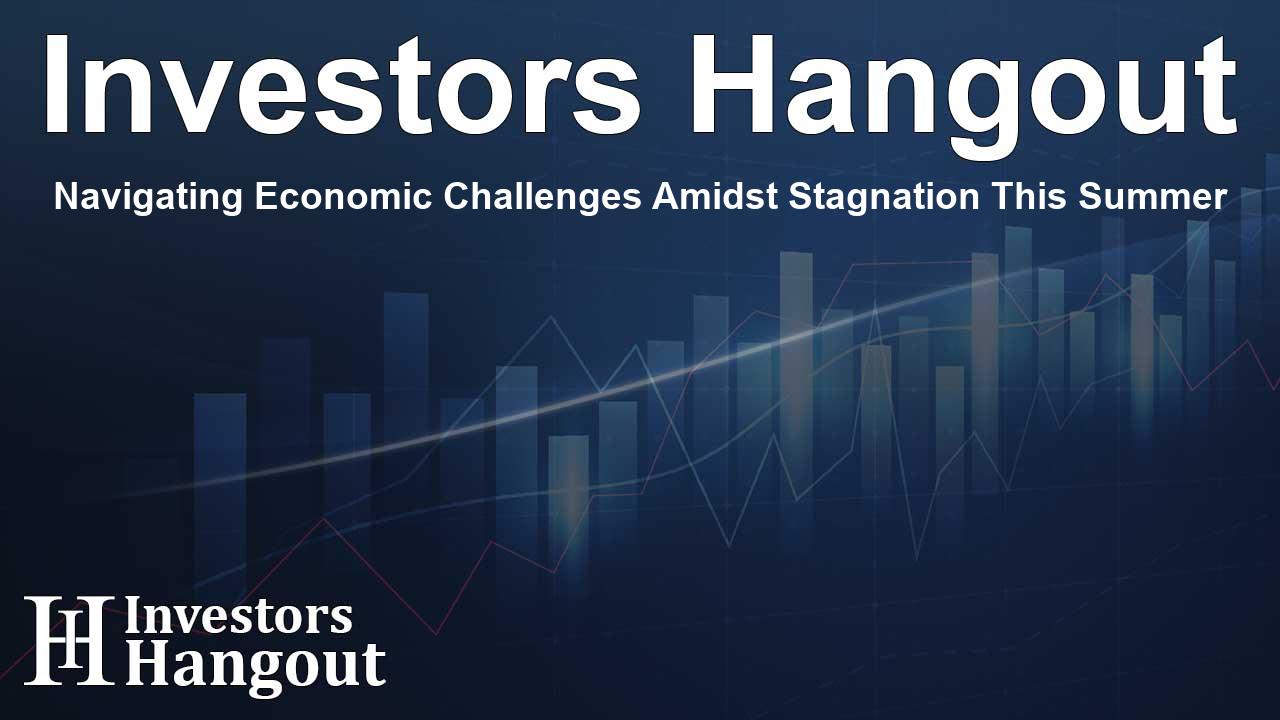Navigating Economic Challenges Amidst Stagnation This Summer

Understanding Economic Stagnation This Summer
As we step into the summer months, there is an increasing need to understand how current economic policies are unfolding. The Federal Reserve aims to simplify its approach to interest rates, waiting for clearer data that can impact their policies. The job market continues to show resilience, yet inflation remains a pressing concern, giving rise to expectations of potential stagflation. Observing the incoming employment data could significantly shape the Fed's strategy going forward.
January's job reports will be closely monitored, as they will provide insights into whether the Fed can resume rate cuts by the end of the month. However, the consensus suggests that the Fed may prefer to wait until they gather more comprehensive data throughout the summer.
The Importance of Context
Interpreting this week’s employment data requires placing it against the backdrop of recent trends and future forecasts. The unemployment rate, currently around 4.2%, aligns with the Federal Reserve officials' estimates for sustained levels of maximum employment. Though the Fed hasn't defined maximum employment officially, many employees see the current unemployment figures as indicative of a healthy labor market.
On the other hand, the core PCE inflation rate, which is currently hovering around 2.7%, has been consistently above the Fed’s target of 2% for some time. This discrepancy prompts the Fed to maintain a modestly restrictive federal funds rate at 4.3%. The Fed has increased the rate to control demand and guide inflation back to target levels.
The importance of incoming data cannot be overstated, as these figures will inform the Fed's decisions and influence their policy responses. Most Fed officials anticipate both unemployment and inflation rates will rise by the end of the year, with projections estimating a 4.5% unemployment rate and 3.1% core PCE inflation in the fourth quarter. At this juncture, both metrics would drift slightly beyond the Fed's ideal thresholds.
Economic Influences Beyond Tariffs
While tariffs have been focal points in economic dialogues, other elements also drive stagflationary trends. Reductions in immigration, especially notable since last summer, have begun to play a significant role, with these changes impacting labor supply. The effects of diminished immigration could restrict labor force growth, complicating employment number interpretations. Jobs are necessary to sustain steady unemployment rates, and with immigration falling, this break-even job creation rate is expected to decline.
Predictions indicate that job growth might diminish drastically, potentially falling to between 10,000 and 40,000 monthly jobs by mid-2025, striking a stark contrast to previous averages. Such reductions raise the stakes in monitoring labor market health through the unemployment rate.
In June, many anticipate that the unemployment rate will land around 4.3%. Though these figures offer a glimpse into labor demand, they might not accurately depict weaknesses stemming from dwindling labor supply. The consensus prediction for payroll growth in June is 110,000 jobs, with indications of slower GDP growth highlighted if the lower bounds are indeed driven by industries heavily reliant on immigrant labor.
Signs from Washington
This summer isn't just about economic indicators; it's also about observing the political landscape and how policies evolve under the current administration. With the end of the pause on certain tariffs approaching, any adjustments on tariffs could significantly impact inflation rates. Recently announced tariffs on specific countries illustrate a trend towards recalibrated rates that may further complicate economic recovery efforts.
The Fed consistently monitors tariff levels, acknowledging their crucial role in inflation persistence. The message from officials indicates a mixed stance on the correlation between tariff increases and their subsequent economic effects, as businesses grapple with potentially persistent inflation driven by tariff hikes.
This summer's developments in tariff policies could create substantial tensions for the Fed's ability to navigate dual mandates effectively. The potential for increased effectiveness of tariffs may lead to unexpected repercussions for price levels and overall economic activity.
Conclusion
In light of ongoing economic uncertainties, Fed officials have emphasized their readiness to respond to economic changes efficiently. While the current federal funds rate is seen as somewhat restrictive, the Fed remains prepared to adjust should conditions warrant such a move. The forthcoming summer represents a critical juncture for the Fed and economic policymakers, as they work to balance their dual mandates amid the complexities of stagnation.
Frequently Asked Questions
What is stagflation, and how does it affect the economy?
Stagflation refers to a combination of stagnant economic growth, high inflation, and high unemployment. It complicates economic policy as measures that reduce inflation could worsen unemployment.
How does the Federal Reserve measure employment?
The Federal Reserve assesses employment through various data points, primarily focusing on the unemployment rate and job creation figures provided in monthly reports.
What role do tariffs play in inflation?
Tariffs can increase the costs of imported goods, leading businesses to raise prices, which contributes to overall inflation in the economy.
Why is monitoring immigration important in economic assessments?
Immigration affects labor supply and job growth. A decrease in immigration can lead to tighter labor markets, altering the dynamics of employment rates and economic growth.
What actions can the Fed take in response to economic stagnation?
The Federal Reserve can adjust interest rates to stimulate or cool down economic activity, implement quantitative easing, and influence banks' lending practices to encourage economic growth.
About The Author
Contact Addison Perry privately here. Or send an email with ATTN: Addison Perry as the subject to contact@investorshangout.com.
About Investors Hangout
Investors Hangout is a leading online stock forum for financial discussion and learning, offering a wide range of free tools and resources. It draws in traders of all levels, who exchange market knowledge, investigate trading tactics, and keep an eye on industry developments in real time. Featuring financial articles, stock message boards, quotes, charts, company profiles, and live news updates. Through cooperative learning and a wealth of informational resources, it helps users from novices creating their first portfolios to experts honing their techniques. Join Investors Hangout today: https://investorshangout.com/
The content of this article is based on factual, publicly available information and does not represent legal, financial, or investment advice. Investors Hangout does not offer financial advice, and the author is not a licensed financial advisor. Consult a qualified advisor before making any financial or investment decisions based on this article. This article should not be considered advice to purchase, sell, or hold any securities or other investments. If any of the material provided here is inaccurate, please contact us for corrections.
